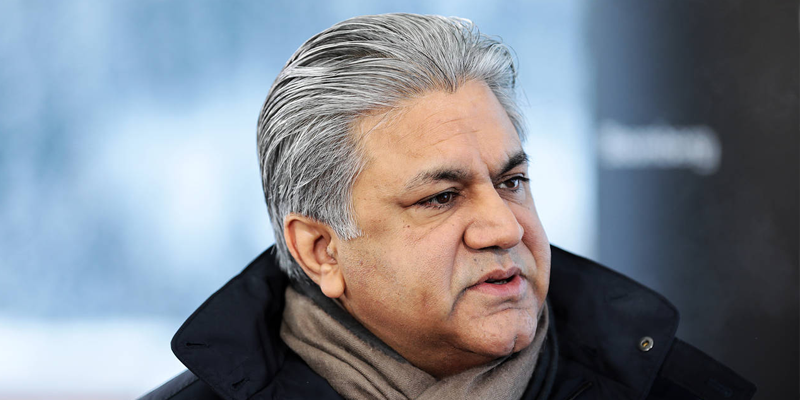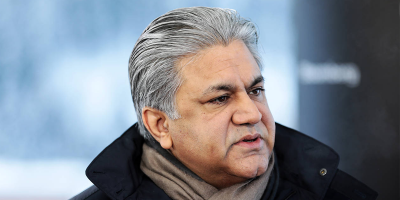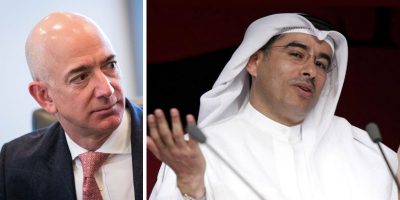Below is the performance of the Abraaj Infrastructure and Capital Growth Fund (ICGF), as of September 2017 (click to open full-size).
ICGF was the largest fund that Abraaj ever managed to raise, and received a total of $2 billion in commitments at its final close in December 2007. At the time it was the largest fund ever raised by anyone with a focus on the MENASA region.
The fund was raised in a couple of closes, the first being $500mn in December 2006, the second was a further $1.2bn in September 2007, and the final of $300mn in December 2007.
Deutsche Bank had assisted with the fundraising, having been a shareholder and a board member of Abraaj since 2004.
Interesting side note here. In 2007, the Head of Capital Markets for the Middle East at Deutsche Bank (DB) responsible for the Abraaj ICGF fundraise was Mr. Ashok Aram. A year and a half after the ICGF final close, he left DB to join Abraaj as a Managing Director based in Dubai. He then re-joined DB in September 2010 having been at Abraaj for little over a year and has been there ever since.
So lets take a look at the fund’s investments. ICGF made a total of 12 investments, starting in 2007.
2007
In 2007 ICGF invested in a total of 5 deals.
- Al Nouran – Consumer Staples – Egypt – $11.3mn
- Acibadem – Healthcare/Financials – Turkey – $300mn
- GEMS – Consumer Discretionary – UAE – $116.6mn
- OCI – Industrials – Egypt – $479.2mn
- Air Arabia – Industrials – UAE – $76.2mn
That tallies up to $983.3mn or around 49% of the total fund. We compared this with ICGF’s capital calls and press releases and noted that many of the dates on the Abraaj table shown above are incorrect. The GEMS deal for example was completed some time in June of 2007, not December.
That being said, it appears that Abraaj invested around half of the fund in that first year. Those of you will recall that in the following year the financial crisis occurred. This saw huge falls in valuations across all asset classes, including emerging markets. Not that Abraaj is expected to be a good market timer, but the origination dates of these deals couldn’t have been worse. This is one of the reasons Private Equity managers tend to invest a fund over a 3 year period, so as to “average in” their capital across a portfolio of deals. Had Abraaj been slower to deploy ICGF’s capital, they would no doubt have gotten some substantial discounts in late 2008 and 2009.
2008
In 2008 Abraaj made a further 6 investments for ICGF.
- IDH – Healthcare – Egypt – $150.5mn
- ManInfra – Industrials – India – $14.4mn
- Ramky – Industrials – India – $13.4mn
- ECI – Industrials – India – $20.2mn
- Byco – Energy – Pakistan – $182.9mn
- Tadawi – Consumer Staples – Saudi Arabia – $136.8mn
This totaled $518.2mn or around 26% of the fund’s total committed capital.
2009
The last investment according to the table was the infamous Karachi Electric (KE), formerly known as Karachi Electricity Supply Company (KESC), and concluded in May 2009. Although around $360mn was initially pledged by Abraaj, the table above shows only $300mn was invested into the utility company.
That makes up the total of $1,801.6mn deployed from ICGF by Abraaj over roughly 2 years. The $200mn remaining was spent on operating costs and Abraaj’s fees (Abraaj charged a 1.5% p.a. fee on total commitments during the investment period, and thereafter 1.5% p.a. on invested capital).
Observations
We make the following observations, as the fund is now around 10 years of age and close to the end of its life.
- Only 5 out of 12 investments have produced a realized or partially realized gain (that’s a 42% hit-rate).
- After 10 years, only around 31% of the deployed capital, or 7 out of 12 investments, have been fully exited.
- The realizations in aggregate cost $626.4mn and returned $1,094.8mn, equating to a 1.75X MoIC (Gross of Abraaj fees).
- Only 3 out of 7 of full realizations were profitable. These were investments in Turkey, UAE and Egypt.
- All 3 India investments resulted in losses of 35%, 72% and 97% of their invested capital.
- The 11.2% Gross IRR over the 10 year life of the fund to date marginally beats the performance of the MSCI Emerging Markets ETF (EEM) which is flat from mid-2007 to date. Factoring in fund expenses, deal fees and Abraaj’s management and performance fees, the net IRR according to Abraaj falls to a paltry 5.7%; a rather uninspiring result for locking up one’s capital for 10 years.
- The fund has distributed around $1,224.6mn to investors and has $1,565mn of residual carrying value remaining (according to Abraaj’s valuations).
- Air Arabia shares are down roughly -11% since the table above was produced (though a dividend was paid in early 2018).
- Abraaj’s 5.96% stake in OIC NV listed in Amsterdam has increased by around 15% since the table was produced, adding around $50mn to carrying value.
- About 36% of the carrying value is in 2 unlisted companies and hence illiquid. A further 44% is tied up in Karachi Electric whose stock trades just $2-3mn per day. Together, around 80% of the remaining carrying value is hard to realize.
- The fund has over $1,113mn exposure (70%) to Pakistani rupee (PKR) denominated assets. The PKR has devalued around 15% against the USD in the last 12 months.
- Abraaj had indicated its interest in divesting KE back in 2016. With the scent of blood in the water following Abraaj’s liquidation last month, it’s increasingly unlikely they manage to realize the company’s full value on an exit.
- It’s also probably poor practice to have not one, but two case-studies written about a deal before one manages to exit fully!
The stalled sale of KE may be regarded as no fault of Abraaj. The transaction is mired in all sorts of political wrangling. Pakistan has just sentenced former Prime Minister Nawaz Sharif to a 10 year prison sentence over corruption charges and faces a general election on 25th July 2018. Pakistan’s National Electric Power Regulatory Authority (NEPRA) has recently blocked any tariff increases Abraaj and KE were seeking, throwing the pending sale to the Chinese into jeopardy.
But then again, Abraaj initially planned on investing $360mn in KE. This would have made this single transaction Abraaj’s second largest investment in their largest ever fund.
Prior to the KE investment Abraaj had made just two investments in Pakistan. An investment in Mannan Shahid Forgings (MSF) was concluded in June 2007 and another in the refinery Byco was made in February 2008. It had no history of being able to exit any positions in Pakistan.
In addition to the large position in KE, Abraaj knew full well that they were investing in a country with notoriously weak corporate governance, corrupt politics and a less than stable currency. Various Wikileaks files highlight the risks associated with KE, including its 40% loss-rate of distributed energy, unpaid government receivables and its bloated 18,000-strong payroll.
Abraaj knew it was a high risk investment when they sized ICGF’s position, a miscalculation that has proven costly by hindering their ability to generate a realization and earn the desperately needed carried-interest.
Conclusion
ICGF presents a rather underwhelming result for Abraaj’s investors. A 5.7% net IRR over 10 years, with much of the fund still unrealized, is a hard story to inspire interest from new investors. It’s therefore bizarre that in 2017 Abraaj went on to try and raise an $8bn fund, 4 times the size of ICGF.
In the words of Arif Naqvi himself, from the outset this was a foray in “(Ad)venture capitalism”;
… not exactly what you want to hear from your investment manager.






Leave a Reply